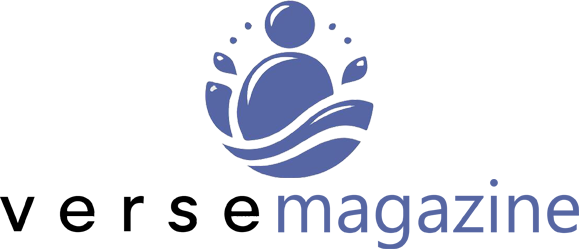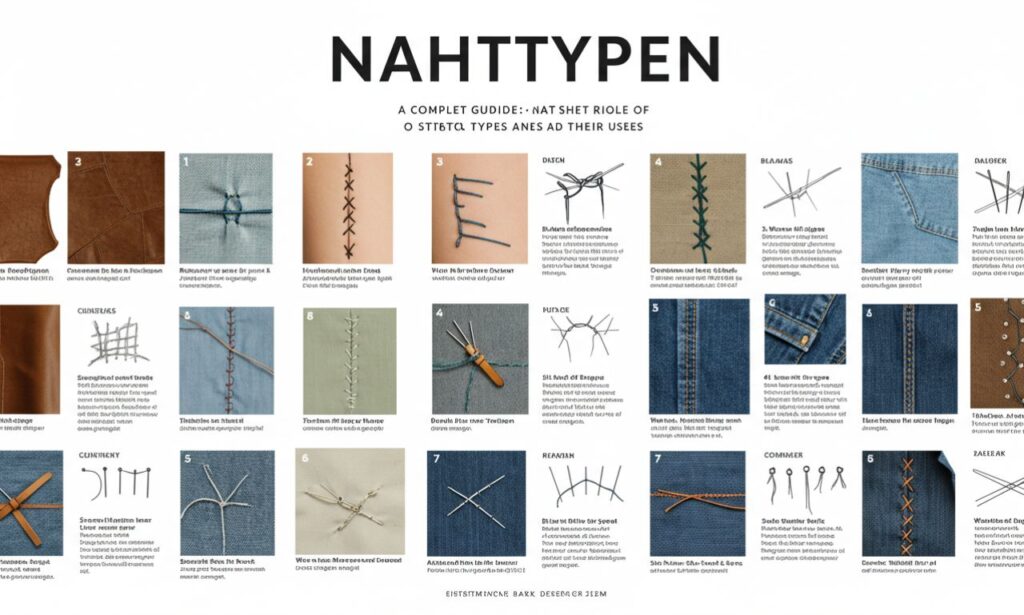In the world of textiles and sewing, the term Nahttypen refers to the various types of seams or stitches used to join fabrics. Though often hidden from view, the choice of stitch has a direct impact on durability, flexibility, appearance, and functionality. Whether you’re working in high fashion, upholstery, technical textiles, or industrial design, understanding Nahttypen is essential for creating strong, comfortable, and visually appealing products.
This article explores what Nahttypen are, common types of stitches, their structural and aesthetic roles, and how modern technologies are influencing their development in 2025.
What Does “Nahttypen” Mean?
“Nahttypen” is a German term meaning “types of seams” or “stitch types.” In sewing and textile manufacturing, it refers to the different techniques used to stitch two or more layers of material together.
These seam types vary in complexity, strength, elasticity, and purpose. Some are used for their visual effect, while others are engineered to withstand stress, moisture, or movement.
Why Nahttypen Matter in Textile Design
The seam is often the weakest point in any textile product. Choosing the correct seam type affects:
-
Durability: Load-bearing applications (e.g., uniforms, backpacks) require reinforced seam types.
-
Flexibility: Clothing and sportswear need seam types that move with the body.
-
Aesthetics: Some seam types are used for visual accents in fashion or accessories.
-
Waterproofing: Seam types can help prevent water from seeping into outerwear or tents.
-
Comfort: Seam construction influences how fabric feels against the skin.
Selecting the right Nahttypen ensures the product performs as expected, looks professional, and lasts longer.
Main Types of Nahttypen and Their Applications
1. Plain Seam (Einfache Naht)
The most basic and widely used seam. Two pieces of fabric are placed right sides together and stitched along the edge.
Use cases: Everyday garments, light fabrics, basic patterns.
Pros:
-
Easy to sew
-
Clean and flat finish
-
Low fabric consumption
Cons:
-
Not ideal for heavy-duty or high-stress use without reinforcement
2. French Seam (Französische Naht)
A seam with enclosed raw edges, often used on delicate or transparent fabrics. It involves sewing the fabric wrong sides together, trimming the seam, then folding and stitching again.
Use cases: Lingerie, blouses, fine dresses.
Pros:
-
Neat finish inside and out
-
Prevents fraying
-
Ideal for sheer fabrics
Cons:
-
Time-consuming
-
Not suited for bulky materials
3. Flat-Felled Seam (Kappnaht)
Two layers are folded and sewn in such a way that raw edges are completely enclosed. Common in jeans and workwear.
Use cases: Denim, sportswear, technical gear.
Pros:
-
Very strong
-
Clean appearance
-
No fraying
Cons:
-
Uses more fabric
-
Slightly rigid, reduces stretch
4. Overlock Seam (Overlocknaht)
Also known as serged seams, these are created using an overlock machine to sew and cut the fabric edge simultaneously.
Use cases: T-shirts, knitwear, stretch fabrics.
Pros:
-
Fast and efficient
-
Stretch-friendly
-
Prevents fraying
Cons:
-
Requires a specialized machine
-
Less clean-looking if used externally
5. Bound Seam (Eingefasste Naht)
The seam is covered with binding tape to reinforce and decorate the edge.
Use cases: Outerwear, sports equipment, bags.
Pros:
-
Enhanced durability
-
Moisture resistance if sealed properly
-
Aesthetic edge finish
Cons:
-
Time-intensive
-
Adds weight and bulk
6. Double-Stitched Seam (Doppelnaht)
Two parallel rows of stitching for reinforcement and style. Often used where extra durability or design emphasis is needed.
Use cases: Pants, uniforms, high-stress zones.
Pros:
-
Reinforced strength
-
Visible, structured look
-
Withstands repeated wash and wear
Cons:
-
Slightly stiffer feel
-
May require precise alignment
7. Zigzag Seam (Zickzacknaht)
A flexible seam that allows stretch, especially useful in knit fabrics and flexible textiles.
Use cases: Underwear, elastic bands, home sewing.
Pros:
-
Easy on most sewing machines
-
Good for stretch fabrics
-
Absorbs tension without breaking
Cons:
-
It can look amateurish if not executed well
-
Less neat appearance than straight seams
Choosing the Right Nahttypen Based on Fabric and Function
When selecting a Nahttyp, consider the following:
-
Fabric Type: Lightweight vs. heavyweight, woven vs. knit.
-
Function: Will the garment stretch, carry weight, or face weather exposure?
-
Location: Visible (aesthetic) vs. hidden (structural) seam.
-
Durability: Will the seam endure frequent movement or washing?
For instance, a T-shirt made of stretch cotton would benefit from overlock seams, while a hiking jacket might require flat-felled or bound seams for weather protection.
Nahttypen in Technical and Industrial Applications
Beyond fashion, Nahttypen are vital in industrial textiles. In the medical, military, automotive, and aerospace industries, specific seam types are used for their functional properties.
-
Heat-sealed seams in waterproof clothing and inflatables
-
Ultrasonic welding for nonwoven medical gowns
-
Bartack seams in tactical gear for strength at stress points
-
Chain stitching in automotive upholstery for elasticity and reinforcement
Every seam is engineered for specific outcomes—load bearing, resistance to chemicals, comfort under pressure, or compliance with industry standards.
Modern Innovations in Stitching and Seam Technology
In 2025, seam construction is evolving thanks to innovation. Advanced sewing machines now offer automated seam detection, smart tension control, and AI-assisted stitching paths.
Sustainable stitching is also gaining momentum. Seam types are being re-engineered to reduce fabric waste, use biodegradable thread, and allow easier garment recycling.
Seamless technology, which uses bonding instead of stitching, is increasingly used in performance sportswear and undergarments. It offers comfort, reduced friction, and a futuristic aesthetic.
Smart textiles now also integrate sensors or conductive threads into seam lines, turning a simple seam into a data channel—for example, in health-monitoring garments or smart uniforms.
Cultural and Regional Perspectives on Nahttypen
In traditional clothing around the world, seam types carry cultural meanings. For example, in Japanese kimono construction, seams follow symbolic geometry. In African wax fabric tailoring, double stitching and piping emphasize status and design. In European historical garments, seam placement reflected both function and fashion hierarchy.
Understanding Nahttypen is not only technical—it also reveals heritage, values, and artistic expression.
Learning and Mastering Nahttypen
For beginners and professionals alike, mastering different Nahttypen requires practice, attention to detail, and the right tools.
Start with basic straight and overlock seams, then move on to more complex techniques like French seams or flat-felled constructions. Textile schools, online tutorials, and digital pattern platforms offer a wealth of resources to refine your technique.
Modern sewing software can also simulate seam strength and performance before production begins—saving time and reducing waste.
Conclusion
Stitching may seem small, but Nahttypen holds everything together—literally and metaphorically. They’re the silent architects of a garment’s success, balancing function, form, and feeling.
In a world where sustainability, performance, and personalization matter more than ever, understanding seam types is key. Whether you’re a fashion student, an industrial designer, or a home sewing enthusiast, exploring the variety and potential of Nahttypen can elevate your craftsmanship and your creativity.







